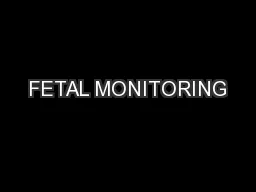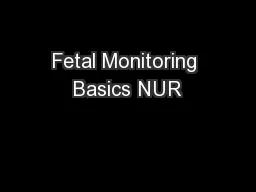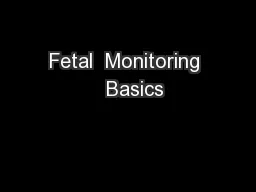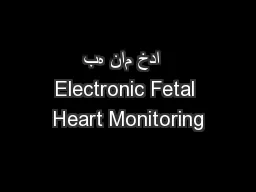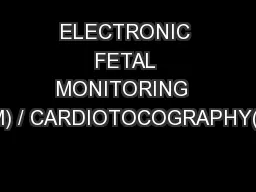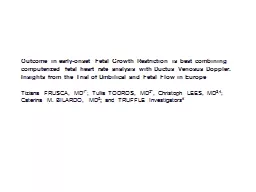PPT-FETAL MONITORING
Author : trish-goza | Published Date : 2017-07-12
ANTE AND INTRAPARTUM DR OSHINOWO MBBS FRCOG OBSTETRICIANGYNAECOLOGIST INTRODUCTION The aim of ANC Ensure maternal well being Ensure Fetal well being Identifying
Presentation Embed Code
Download Presentation
Download Presentation The PPT/PDF document "FETAL MONITORING" is the property of its rightful owner. Permission is granted to download and print the materials on this website for personal, non-commercial use only, and to display it on your personal computer provided you do not modify the materials and that you retain all copyright notices contained in the materials. By downloading content from our website, you accept the terms of this agreement.
FETAL MONITORING: Transcript
Download Rules Of Document
"FETAL MONITORING"The content belongs to its owner. You may download and print it for personal use, without modification, and keep all copyright notices. By downloading, you agree to these terms.
Related Documents

